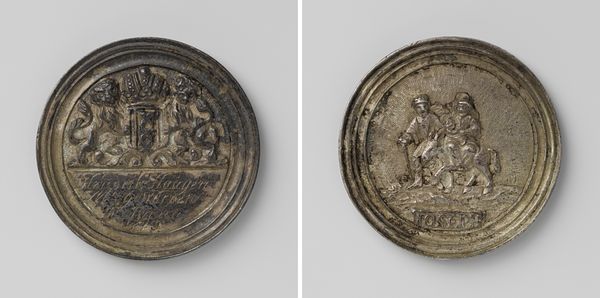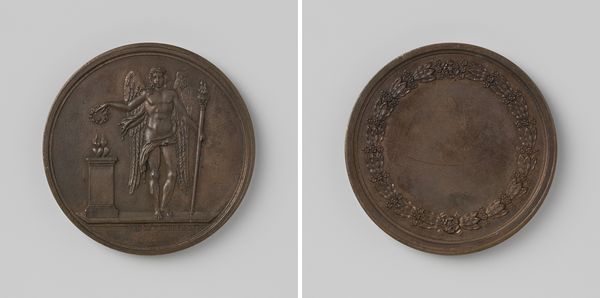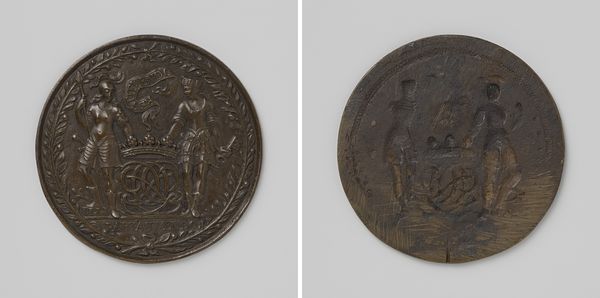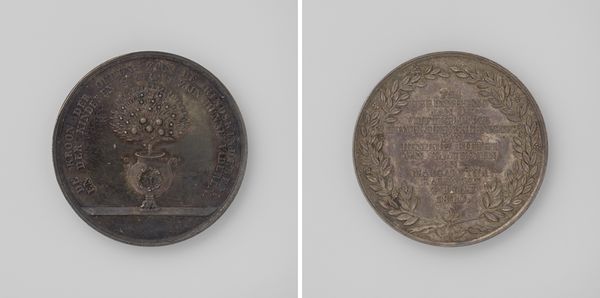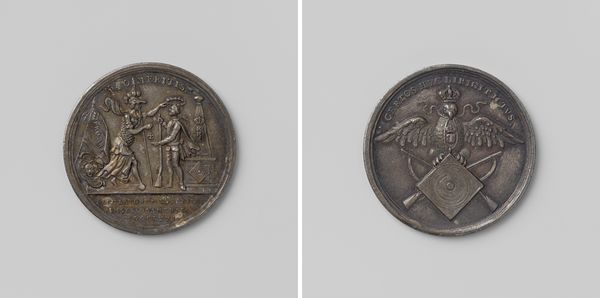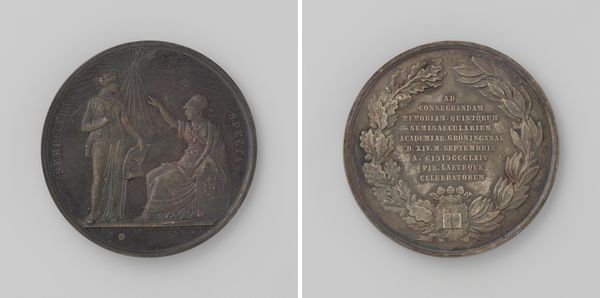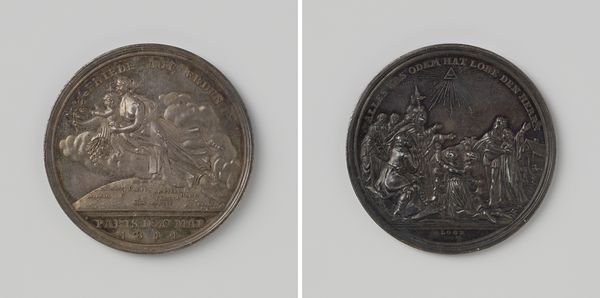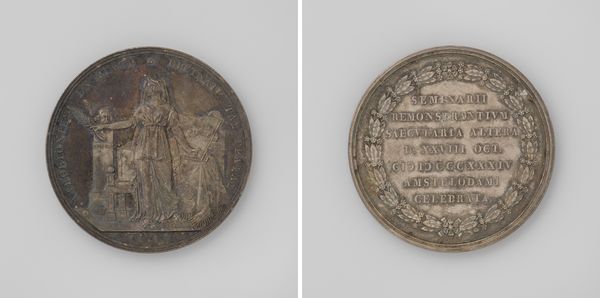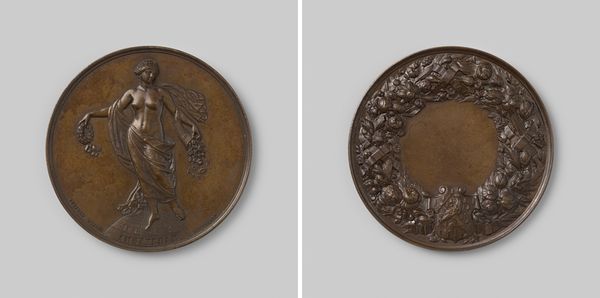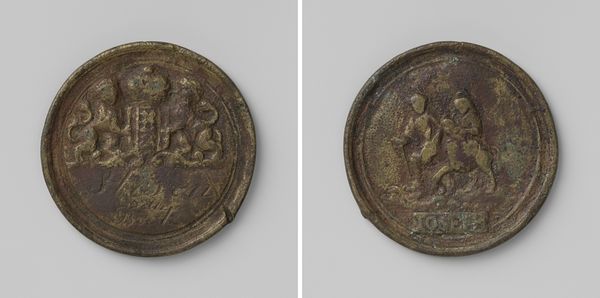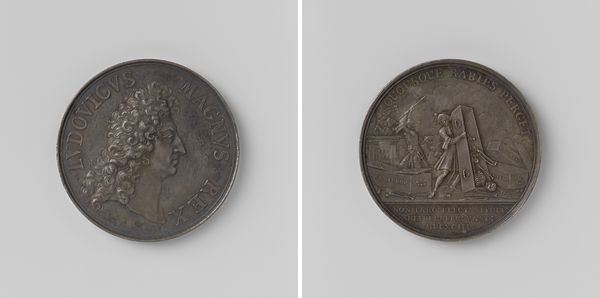
Maatschappij tot Nut van 't Algemeen, penning uitgereikt aan Herm. van IJzendoorn 1859
0:00
0:00
metal, relief, sculpture
#
neoclacissism
#
metal
#
sculpture
#
relief
#
sculpture
#
history-painting
Dimensions: diameter 4.5 cm, weight 25.34 gr
Copyright: Rijks Museum: Open Domain
Editor: This is a metal medal from 1859 by David van der Kellen, commemorating Hermann van IJzendoorn and the Maatschappij tot Nut van 't Algemeen, which I believe translates to 'Society for Public Welfare'. It’s neoclassical in style, with a classical scene in relief on the front. What strikes me is the implied narrative; there’s a scene of what appears to be a seated woman with children surrounding her. What do you see in this piece, particularly considering its social context? Curator: What I see is a fascinating encapsulation of 19th-century ideals around societal improvement and paternalism. The neoclassical imagery idealizes civic virtue, portraying the 'Society for Public Welfare' as a benevolent, almost maternal figure nurturing its members. But let’s unpack that ‘welfare’. Who defines it? Who benefits, and who might be excluded from this vision of progress? Editor: That’s interesting! It seems very idyllic on the surface, but your questions really highlight the potential for power imbalances. Do you think the choice of neoclassical style contributes to this specific message? Curator: Absolutely. Neoclassicism, with its roots in Enlightenment thought and ancient republics, was often used to evoke notions of order, reason, and civic responsibility. Here, it lends an air of authority and timelessness to the Society's mission, perhaps masking the more complex realities of social stratification. What might a more radical artist of the time made of this medal, do you think? Editor: Perhaps someone focusing on the lived experiences of those who weren't benefiting from this 'welfare,' maybe depicting the poverty or social issues the Society was supposedly addressing. This conversation has made me consider how even seemingly innocuous commemorative objects can be loaded with ideology. Curator: Precisely. By questioning the narratives embedded within these objects, we can begin to understand the complexities of social reform and the ever-present potential for exclusion and hidden biases.
Comments
No comments
Be the first to comment and join the conversation on the ultimate creative platform.
